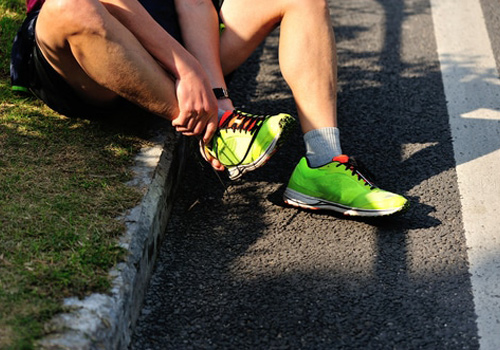Long-distance runners are susceptible to various injuries due to the repetitive nature of their activity, the prolonged impact forces on their joints, and the high mileage they cover. Here are some of the most common injuries that long-distance runners suffer from:
- Runner’s Knee: Runner’s Knee is a common injury caused by the repetitive motion of running, which can cause pain around the kneecap. Symptoms include pain, swelling, and tenderness around the kneecap, especially when bending or walking upstairs. Treatment usually involves rest, ice, compression, and elevation, and physical therapy to strengthen the muscles around the knee.
- Shin Splints: Shin Splints are another common injury among runners, caused by the inflammation of the muscles, tendons, and bone tissue around the tibia. Symptoms include pain, tenderness, and swelling along the inner edge of the shinbone. Treatment involves rest, ice, compression, and elevation, as well as proper footwear, stretching, and strengthening exercises.
- Plantar Fasciitis: Plantar Fasciitis is a common injury caused by the inflammation of the plantar fascia, a band of tissue that runs from the heel to the toes. Symptoms include heel pain, stiffness, and tenderness, especially in the morning or after long periods of sitting. Treatment usually involves rest, ice, stretching, and strengthening exercises, as well as proper footwear and orthotics.
- Achilles Tendinitis: Achilles Tendinitis is a common injury caused by the inflammation of the Achilles tendon, which connects the calf muscles to the heel bone. Symptoms include pain, swelling, and stiffness in the Achilles tendon, especially after prolonged activity. Treatment usually involves rest, ice, stretching, and strengthening exercises, as well as proper footwear and physical therapy.
To diagnose these injuries, a physician will take a detailed history of the patient’s symptoms, including when they began, the location of the pain, and the severity. They will also conduct a physical exam, looking for signs of inflammation, tenderness, and swelling. In some cases, imaging tests like X-rays or MRIs may be necessary to rule out more serious injuries.
Treatment for these injuries usually involves a combination of rest, ice, compression, and elevation (RICE), along with anti-inflammatory medications and physical therapy. Depending on the severity of the injury, surgery may be necessary.
Prevention of these injuries is crucial, and long-distance runners can take steps to minimize their risk of injury by wearing proper footwear, warming up and cooling down before and after running, gradually increasing mileage, cross-training with low-impact activities, and incorporating strength training and flexibility exercises into their routine.







